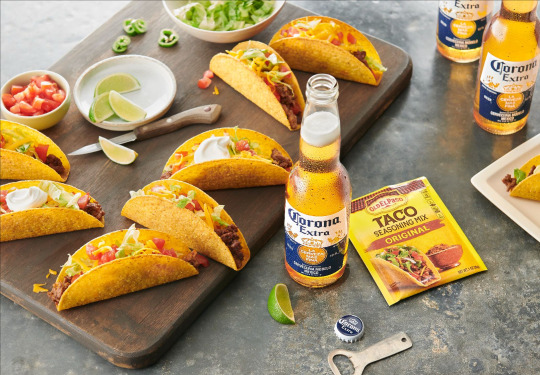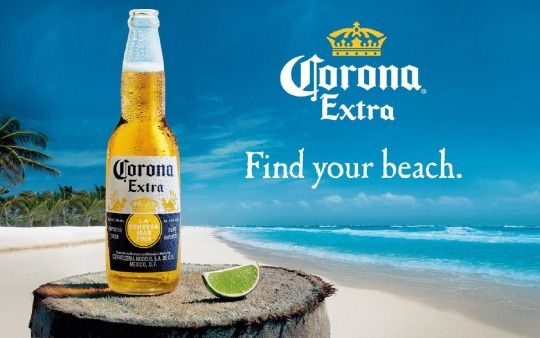Don't wanna be here? Send us removal request.
Text
Learning from Burberry
Burberry took a “branded house” approach to managing its portfolio, which had been exceptionally successful. As an overarching identity, Burberry positioned itself as the aspirational, but functional brand. The beauty of this identity is that it is style-agnostic. A cutting-edge fashion bomber jacket can be aspirational and functional, while a classic, luxury trench coat can be aspirational and functional, as well. Also, Burberry created a distinct brand for each of its customer group. This allowed them to tailor the design language according to each customer groups’ needs. For instance, Burberry Blue and Black focused on young women and men in Japan, while Thomas Burberry was catered for customers in Spain and Portugal. All of these brands benefited from the overarching Burberry identity of aspirational and functional design.

One risk of the branded house approach is that dissociative groups are connected through the parent brand. Through the Burberry brand, hip-hop musicians are connected to customers seeking a classic British look. Burberry’s choice of not addressing this issue actually played in its favor, because it avoided legitimizing the hip-hop musicians as a Burberry target customer. Moreover, since these two customer groups are unlikely to interact with each other – they go to different places, engage in different activities, etc. – the two dissociative groups being connected to each other had resulted in an alienation of one group.
There is something to be learned from Burberry for the CDO. The CDO provides counseling services to distinct groups of students. Students going down the “highway” path seek recruitment in well-established companies with structured recruiting processes, those treading the “dirt road” path look for opportunities in companies with irregular recruiting patterns, and those exploring the “jungle” path search for employment in firms that may or may not be hiring at all. Each of these student groups have different needs. What the CDO can learn from Burberry is that it can create an overarching identity that is applicable to all three groups. For example, it can brand itself as the resource that delivers “unbiased, personalized counseling”. Then, it can segregate its counselors by their expertise. For example, counselors with extensive experience in consulting can be allocated to the highway team, while those with exceptional networking know-how can be assigned to the jungle team. This way, CDO would be able to tailor their resources according to the needs of each student group, while associating each group with the overarching CDO identity.
1 note
·
View note
Text
Examining CDO Through Rogers’ Five Factors
As we examine the career development office’s (CDO) brand through the lenses of Rogers’ Five Factors, we can see that the CDO’s customer journey can be improved in regards to two factors: complexity and observability. The CDO provides a range of services to support students’ recruiting journey. In this post, we will focus on CDO’s counselling services.
A user faces a steep learning curve when first utilizing the CDO’s counselling services. Firstly, the way CDO counsellors are categorized is difficult to understand. Counsellors are grouped by “CDO Team” and “MIT Sloan Industry Advisors”. However, counsellors within the “CDO Team” specialize by industry and program as well. As a result, it is unclear which counsellor is best suited for the user. Moreover, it is unclear how the “CDO Team” and “MIT Sloan Industry Advisors” differ with regards to the expertise they provide. Secondly, the CDO website is difficult to navigate. There is one website for finding out about CDO resources and another for making appointments. What should be a few simple clicks is a maze. In the end, many users give up before they reach the counselling stage, because it is so complicated to choose the right counsellor and make an appointment.
In terms of observability, the CDO can improve its communication about how its services have benefited students. In the current situation, users have no visibility on whether others have used CDO’s services nor whether anyone has benefited from them. As a result, people are unaware of how helpful the counselling can be. One way the CDO can drive observability is by communicating the number of students that have utilized the counselling services within a given month or semester. This will let students know that others are actually benefiting from CDO’s services. Moreover, it taps into the concept of a social norm. When users see that others are using CDO’s services, they will be more motivated to “fit in” and utilized the services, as well.
1 note
·
View note
Text
Singapore Airlines & CDO
Singapore Airlines (SIA) identified a customer value that was beyond the utilitarian value of an airline – customer service – and ingrained it into the company’s core DNA. This is an approach that the Career Development Office (CDO) can take to boost its utilization (our Branding Lab topic). What made SIA so successful was that it built its entire operation and culture around providing the best customer service possible, addressing both direct and indirect customer touchpoints. Flight attendants have direct interactions with passengers, and this important touchpoint is addressed through their training. The training involves developing not only functional skills, such as how to pour a cup of coffee at 30,000 feet, but also soft skills that help with establishing a connection with the passengers while pouring that cup of coffee. The focus on customer service extends to ground staff, who engage with passengers indirectly. For example, baggage handlers are incentivized to unload bags and deliver them to the passengers in a timely manner. Caterers of on-board meals are held up to a standard based on the number of compliments they receive on the food. Because customers are embraced with top quality service through every aspect of the customer journey, customers view SIA as not just an airline but and airline that delivers an experience.

The exercise of identifying an added customer value would be useful for the CDO. Focusing on CDO’s career counselling service, the mock interviews and resume reviews serve the utilitarian need of an MBA student. However, one can imagine there being additional customer values that are important to MBA students, such as appointment availability, ease of setting up appointments, a sense of safe space, and a dedicated career coach. The CDO can identify these customer values through research. For instance, a netnography research on the Slack channels of professional clubs (e.g. Management Consulting Club) can provide a glimpse on the types of counselling students find helpful. Individual interviews can uncover how students feel about the customer journey when engaging with the CDO’s service and why they might choose alternative counselling services instead. Supposing the ease of setting up appointments is a crucial customer value, CDO could improve various aspects of the current customer journey with that customer value in mind. They could reformat the CDO website to make it easier to navigate, offer a centralized email or phone-based appointment booking service, and a calendar that shows all counsellors’ availabilities. As such, the first step of CDO’s rebranding process would be to better understand MBA students’ needs beyond the utilitarian values of their services.
1 note
·
View note
Text
Market Research at a Plant Engineering Company

I previously worked at a plant engineering company that provided design, procurement, and construction services to chemical companies. When chemicals companies, such as BASF and Dow, looked to expand their plant capacity, they would contract with plant engineering companies to design the new plant, supply equipment, and construct the plant. I was involved in market research that aimed at identifying the drivers that motivated these chemical companies (our customers) to make expansion decisions and building a model that predicted whether a customer would initiate an expansion project in the near future. This model was used to prioritize customers and for our sales force planning.
One market research step that I’d like to highlight is the data collection step. Data collection included both primary and secondary data. Primary data consisted of internal sales records such as the year, project size, and plant age by customer. Secondary data was purchased from IHS, a market research firm, and included market prices of chemicals and industry growth by country. The point mentioned in the Market Research reading about the challenges of inefficient data sharing mechanisms across an organization certainly resonated. Our affiliate company in Germany was already subscribed to IHS at the time. However, in order to access the data, not only did we need to coordinate internally with our German office, but also IHS Germany had to coordinate with IHS Japan, which was very time-consuming. After data collection, a model was built to score and prioritize customers.
One interesting difference between the data collection for a project-based, B2B market research and that of a typical B2C market research is the volume of data. In a typical B2C context, one can reach out to thousands of consumers. Data analysis would yield statistically significant results. In our B2B context, the total number of customers was on the order of 300 worldwide. Furthermore, each customer only engaged in expansion projects once every 5-10 years. Moreover, there were stark differences in expansion decision-making depending on where the customer was based, company scale, and financial performance. As we segmented customers by geography and size, the amount of data for each segment became too few to yield accurate models. At the time, we did not have a way to resolve this, so we accepted the risk of inaccuracy and proceeded. I would be curious to hear if there is any workaround for conducting market research when data volume is low.
1 note
·
View note
Text
Corona Beer
Corona Beer is in a much stronger branding position compared to Heineken, and Corona Beer should capitalize on this by doubling down on its “Fun, Sun, Beach” theme. Corona Beer’s messaging has been consistent since its inception and, for many consumers, there is a strong association between Corona beer and the image of a vacation on a sunny beach. The lime is another iconic differentiator - one that loosely associates the beer with a Mexican imagery and certainly makes the beer unique among other beer brands. As a result, Corona Beer has created a distinct schema in consumers’ minds.
Heineken has not been able to establish a robust identity for itself. There are two issues with Heineken’s messaging: 1) the message has been inconsistent and 2) it seems to have been out of touch with the needs of the growing customer base. Throughout the late 80’s and early 90’s, Heineken’s messaging has bounced from communicating to younger drinkers to staining competitors as fads, to focusing on its product quality. It has also shuffled through multiple advertising agencies, as well as senior management. As a result, it has failed to create a robust schema that consumers think of when they see “Heineken”. Furthermore, Heineken’s emphasis of product quality may have been disconnected with the wants of the growing consumer segment. The largest segment of imported beer drinkers are males below the age of 25 with higher levels of education. Additionally, the Hispanic population is becoming an increasingly important segment. For these segments, beer quality may not be the most important criteria when choosing beer. Other criteria, such as drinkability, price, food pairing, and brand perception (sophisticated versus fun) may be just as, if not more, important for these growing customer segments. Until Heineken finds its identity, its larger advertising budget is not a cause for serious concern for Corona Beer.

Corona Beer can capitalize its branding advantage by engaging in localized advertising. In fact, Corona Beer is well positioned to serve the two important beer drinker segments: the growing Hispanic population and non-Hispanic, male population with relatively high levels of education. These two customer segments have different drivers for choosing Corona Beer. For Hispanic drinkers, the main selling point might be that the beer pairs well with the food they often eat or a drink their family and friends have always drank before moving to the US. On the other hand, one can imagine the latter segment to consist largely of white-collar workers who vacation in sunny beach destinations. These vacationers may drink Corona Beer as a way of reminiscing the fun memories in Cancun. Corona Beer can customize its advertising to cater to each customer segment. In states with high Hispanics population, such as Massachusetts, New Jersey, and Arizona, the advertising can emphasize the beer’s ties to Mexican cuisine and culture. The company can identify districts with high Hispanic populations and place advertising in shopping malls located in those areas. On the other hand, in Northeastern states with colder weathers and higher proportions of white-collar workers, such as New York and Pennsylvania, people might be attracted by the schema of sunny beaches that are associated with Corona Beer. After a long day at work and commuting in the cold, one might wish to recall the time they spent tanning on the beach by drinking a bottle of Corona. Corona Beer can target these customers by placing beach party-themed ads at subway stations of metropolitan cities. Corona Beer can also further strengthen its schema by partnering with beach apparel brands and travel agencies and placing advertisements in the proximity of these commercial locations. Since Corona Beer’s branding is already in a stronger position compared to Heineken, especially for the growing customer segments, Corona Beer should leverage this strength by focusing further on its “Fun, Sun, Beach” theme.

2 notes
·
View notes